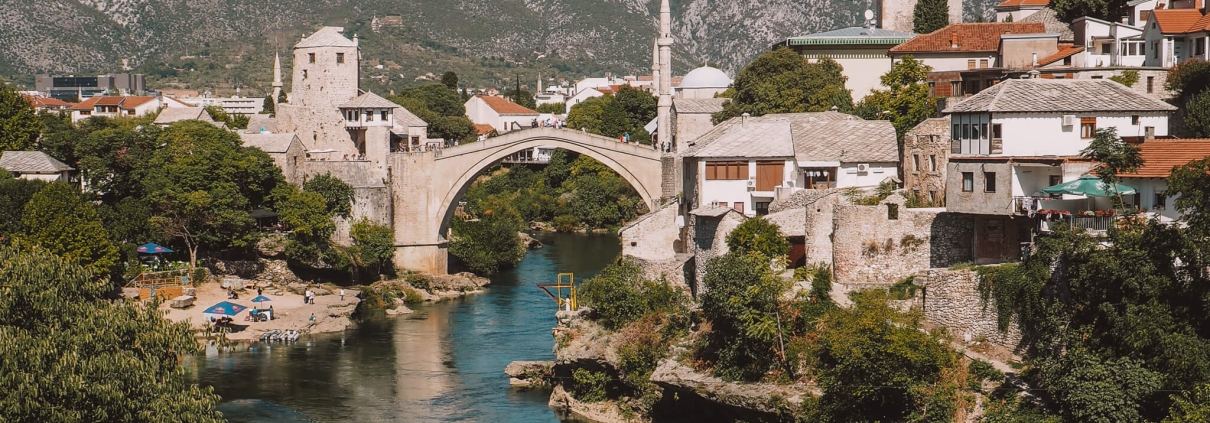The pearl of Bosnia and Herzegovina, Mostar, is not only known for its famous Stari Most bridge, but also has many fascinating stories to tell.
In this blog post, you will discover 10 fascinating facts about Mostar that will immerse you even more in the magic of this city. And if you end up being as enthusiastic as we are, we will be happy to help you plan your unforgettable trip to Mostar.
1. Where is Mostar?
The city of Mostar is located in the south of Bosnia and Herzegovina, on the banks of the emerald-green Neretva. It has been inhabited since prehistoric times. Its location in a basin between the mountain massifs of Velež (1968 m) and Čabulja (1776 m) at an altitude of just 60 m above sea level makes for a hot microclimate.
2. Is Mostar named after “Stari Most”, the famous bridge?
Most is Bosnian for bridge. So you might think that the city of Mostar was named after its most famous landmark. But that is wrong!
In 1466, the region around Mostar was conquered by the Ottomans, developed into an administrative seat and trading centre and finally the old bridge, today’s symbol of the city, was built. Almost 10 years later, the Ottomans appointed a bridge keeper, a Mostar, who demanded a fee for crossing the bridge. The current name of the city in Bosnia is derived from this.

3. Is Mostar the hottest city in Bosnia and Herzegovina?
With an average of 2291 hours of sunshine per year, Mostar is the sunniest city in Bosnia and Herzegovina. But that’s not all: due to its basin location nestled in the mountains of the Dinaric Alps, temperatures there often climb to over 40 °C in summer. This makes Mostar one of the hottest cities in Europe – even cooling off in the Neretva won’t help much!
4. Is the Neretva the coldest river in the world?
The 225-kilometre-long Neretva, which flows into the Adriatic Sea in the Croatian town of Ploče, is considered the coldest river in the world. At its source at 1,227 metres above sea level, it has a temperature of around 7 degrees and even in hot Mostar, the water temperature rarely rises above 10 degrees. Measured by the average outside temperature, this makes it the coldest river in the world.
Incidentally, the river Neretva takes its name from the Illyrian and means ‘goddess of water’.
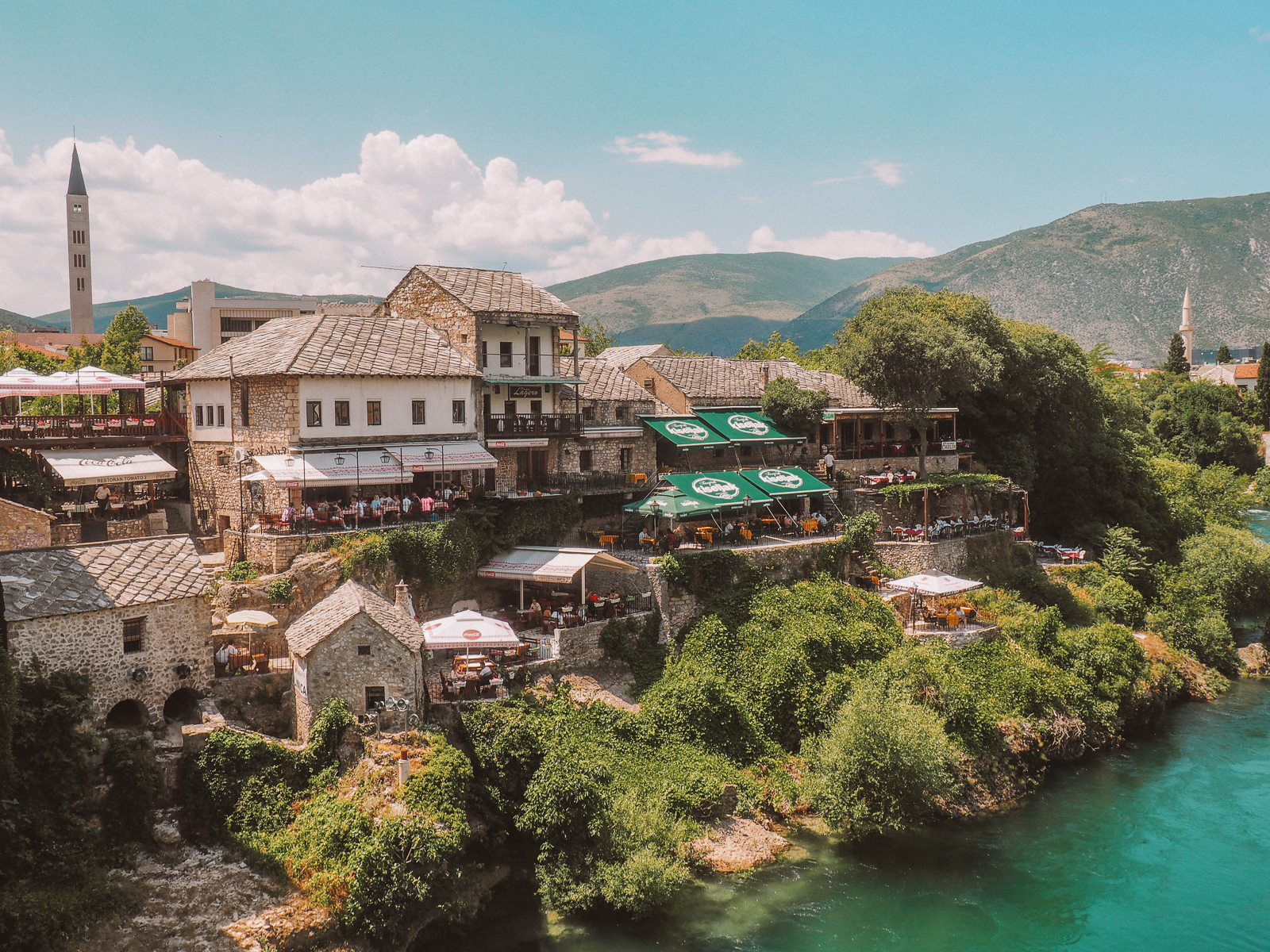
5. Where does the bridge jumping tradition of Mostar come from?
It is not clear exactly where the tradition of cliff jumping in Bosnia and Herzegovina comes from. But it is certain that people all over the country dare to plunge into the depths: from the bridge in Mostar, the Pliva waterfall in Jajce, Strbački Buk in Una National Park…
In Mostar, however, jumping from the old bridge has been a tradition for over 450 years. Legend has it that the jump turns a boy into a man – definitely an initiation ritual with a difference!
Today, the jumpers also attract many tourists. And daring visitors can even take the plunge themselves from the UNESCO-protected sight – after intensive training, of course.
6. Why is the region called Herzegovina?
Bosnia and Herzegovina consists of two historical regions: Bosnia and Herzegovina. The name of the Herzegovina region goes back to Stjepan Vukčič Kosača, who gave himself the title Herceg (Duke). After the Ottoman conquest, the name simply remained for his former territory – Hercegovina was born.
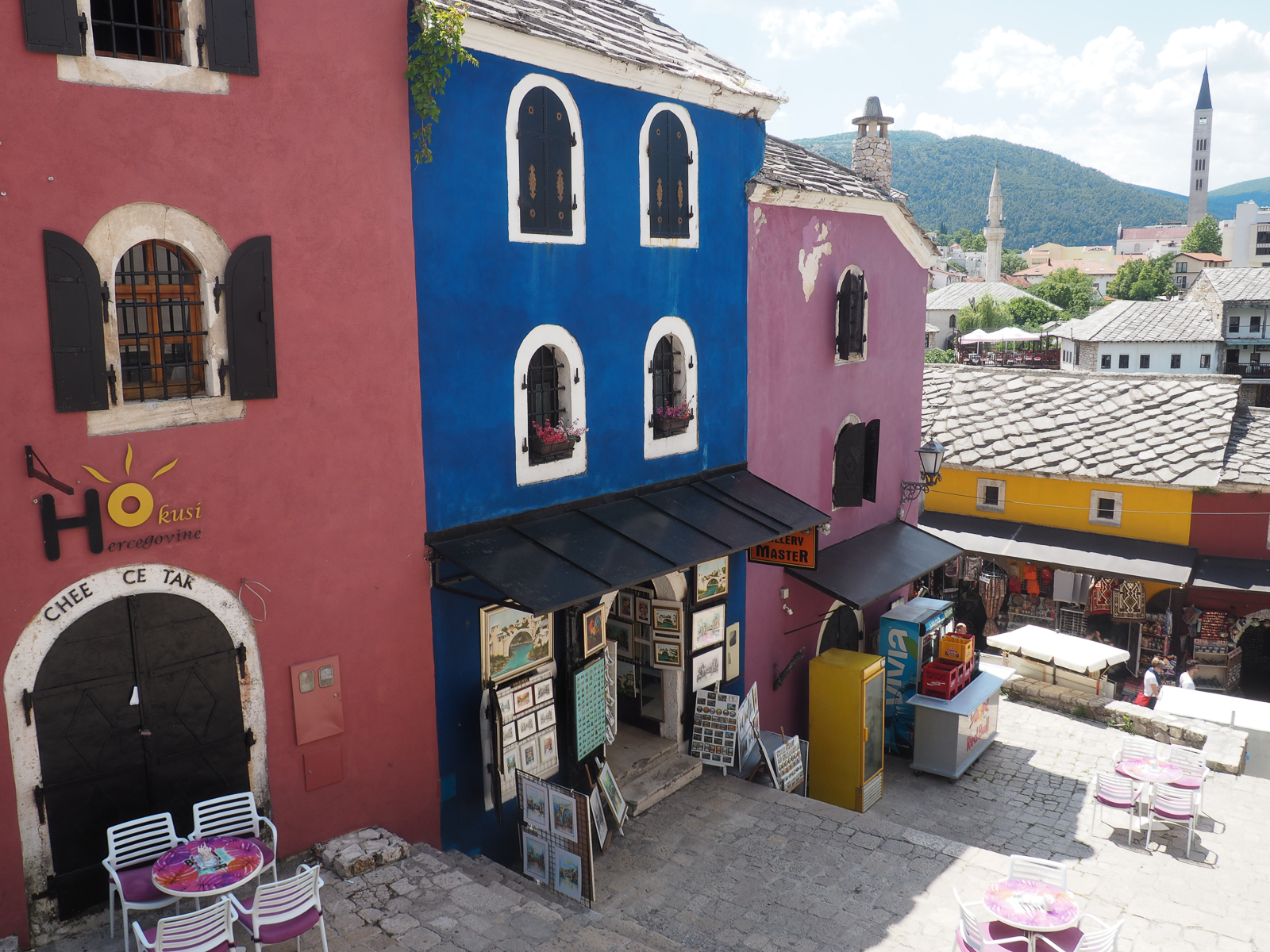
7. Is there an Ottoman influence in Mostar?
Mostar was part of the Ottoman Empire for over 400 years. This period had a lasting impact on the city’s architecture, culture and cuisine. The Ottoman-style mosques, bridges and bazaar are living testimonies to this era. From Stari Most to Kriva Čuprija (the crooked bridge), the entire historic centre of Mostar has been a UNESCO World Heritage Site since 2005.
8. Was the Stari Most destroyed?
After the collapse of Yugoslavia, the Bosnian War began in 1992. During this time, the old bridge in Mostar was completely destroyed by Croatian forces in 1993. It took almost a decade to rebuild the bridge over the Neretva: the bridge was not officially reopened until 2004. 30 years after the Bosnian war, it now stands as one of the most important sights in Mostar as a symbol of reconstruction and reconciliation.
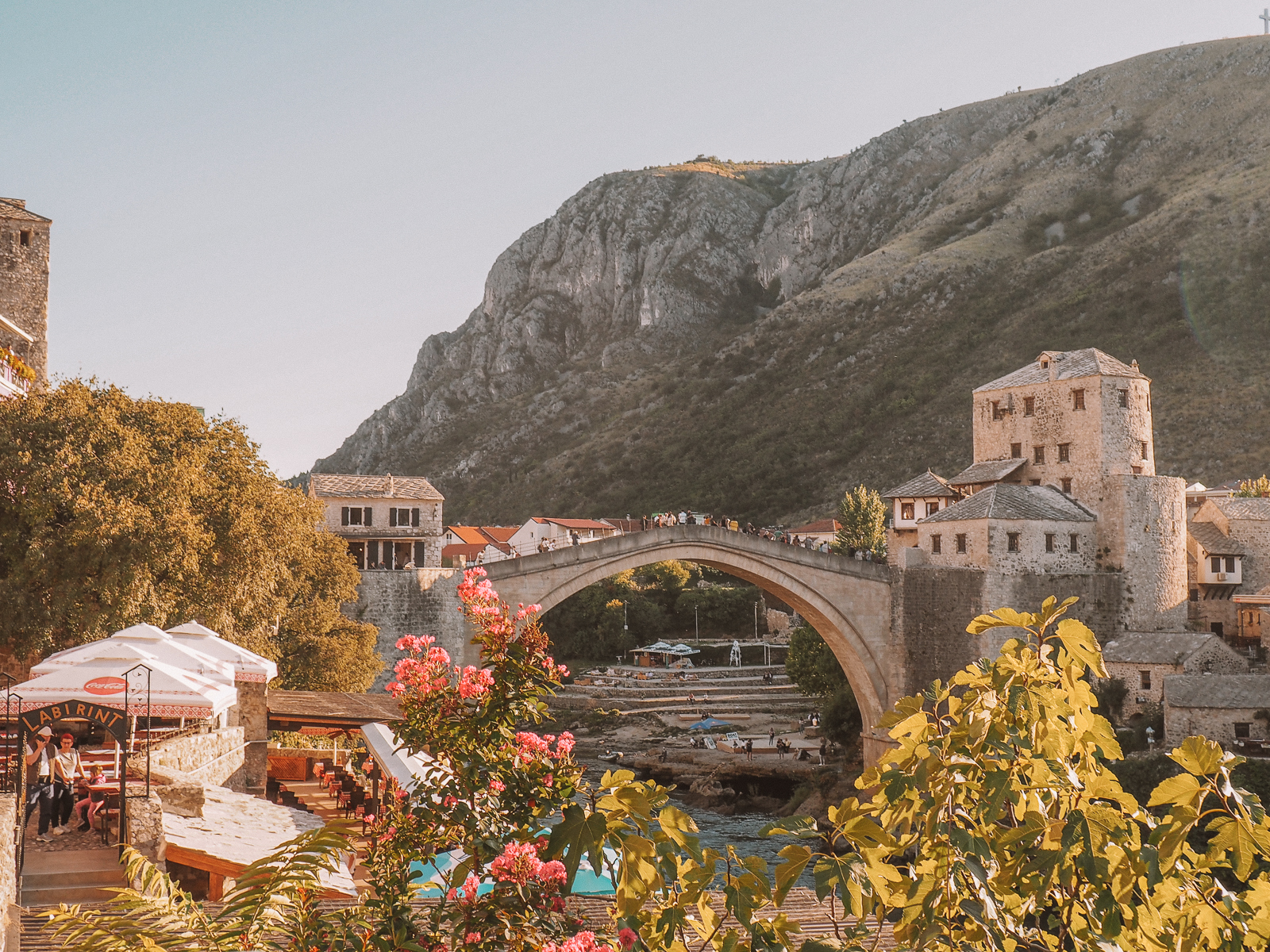
9. Do Mostari like to drink coffee like Sarajevans?
The coffee culture in Mostar has deep roots. Bosnian coffee, similar to Turkish coffee, is served in small copper pots called “džezva”. A visit to one of the traditional coffee houses will give you an insight into this centuries-old ritual.
10. Is there wine in Mostar?
The warm temperatures and the Mediterranean climate create perfect conditions for wine growing in Herzegovina. Mostar and its surroundings are known for their wine production, especially the Trnjak, Blatina and Žilavka varieties, which are even autochthonous. A visit to one of the local wineries not only offers the opportunity to taste excellent wines, but also to gain an insight into the centuries-old tradition of wine growing in this region.
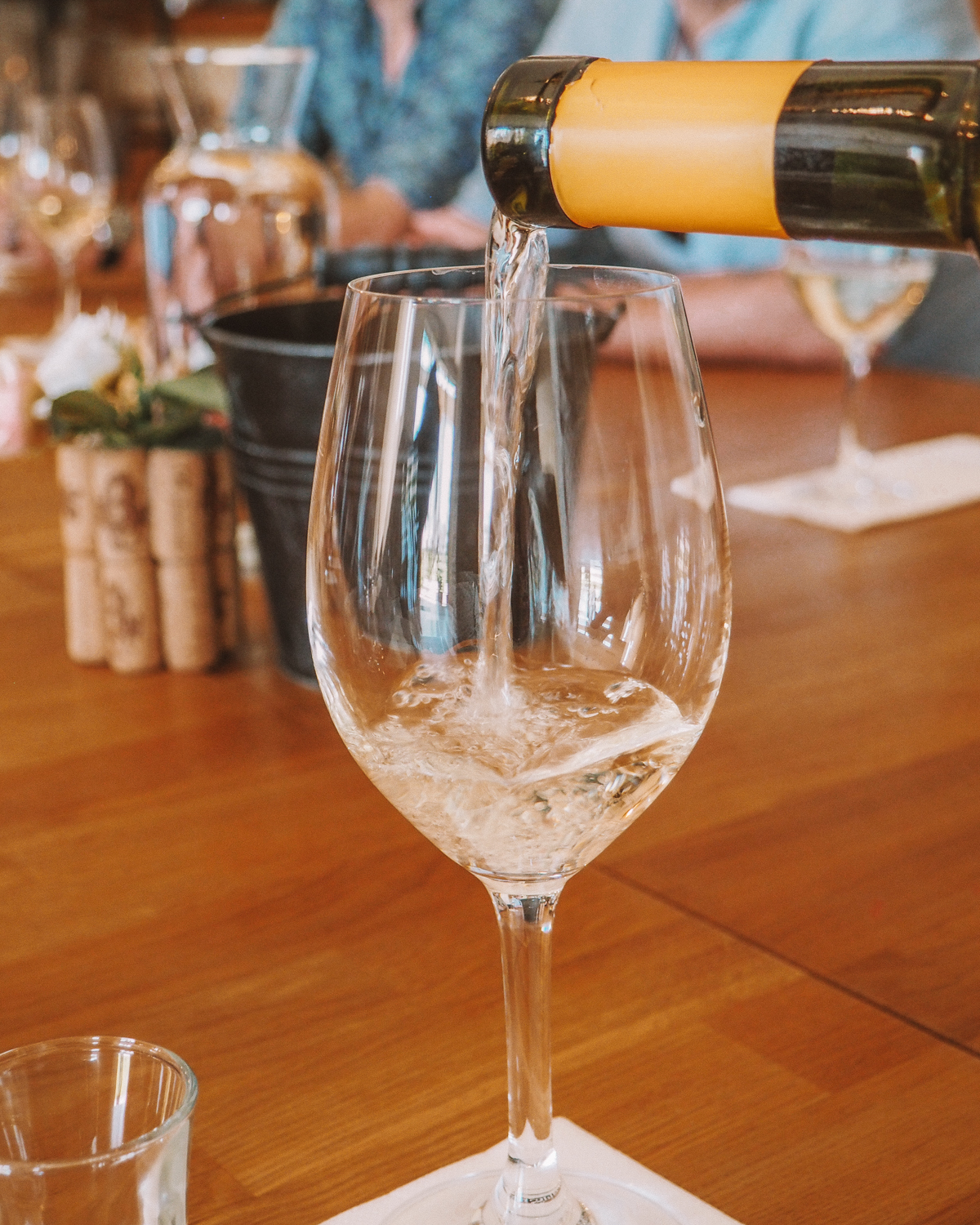
Each of these facts will give you a deeper insight into the fascinating history and culture of Mostar. If you are now curious and want to plan your trip to Mostar, we as a travel agency are happy to assist you. We will help you discover the best experiences and hidden treasures. So, pack your bags and let Mostar enchant you!




